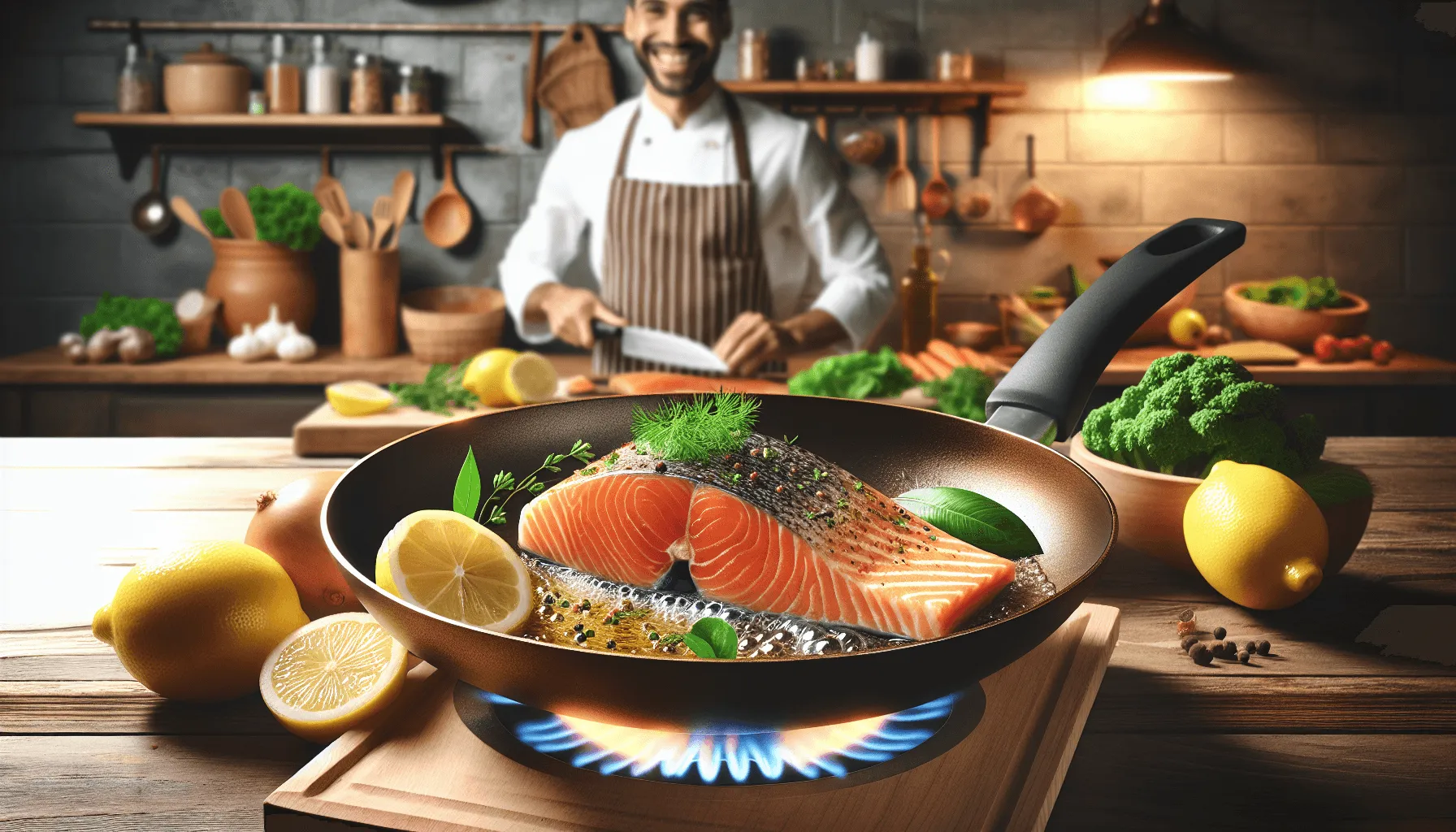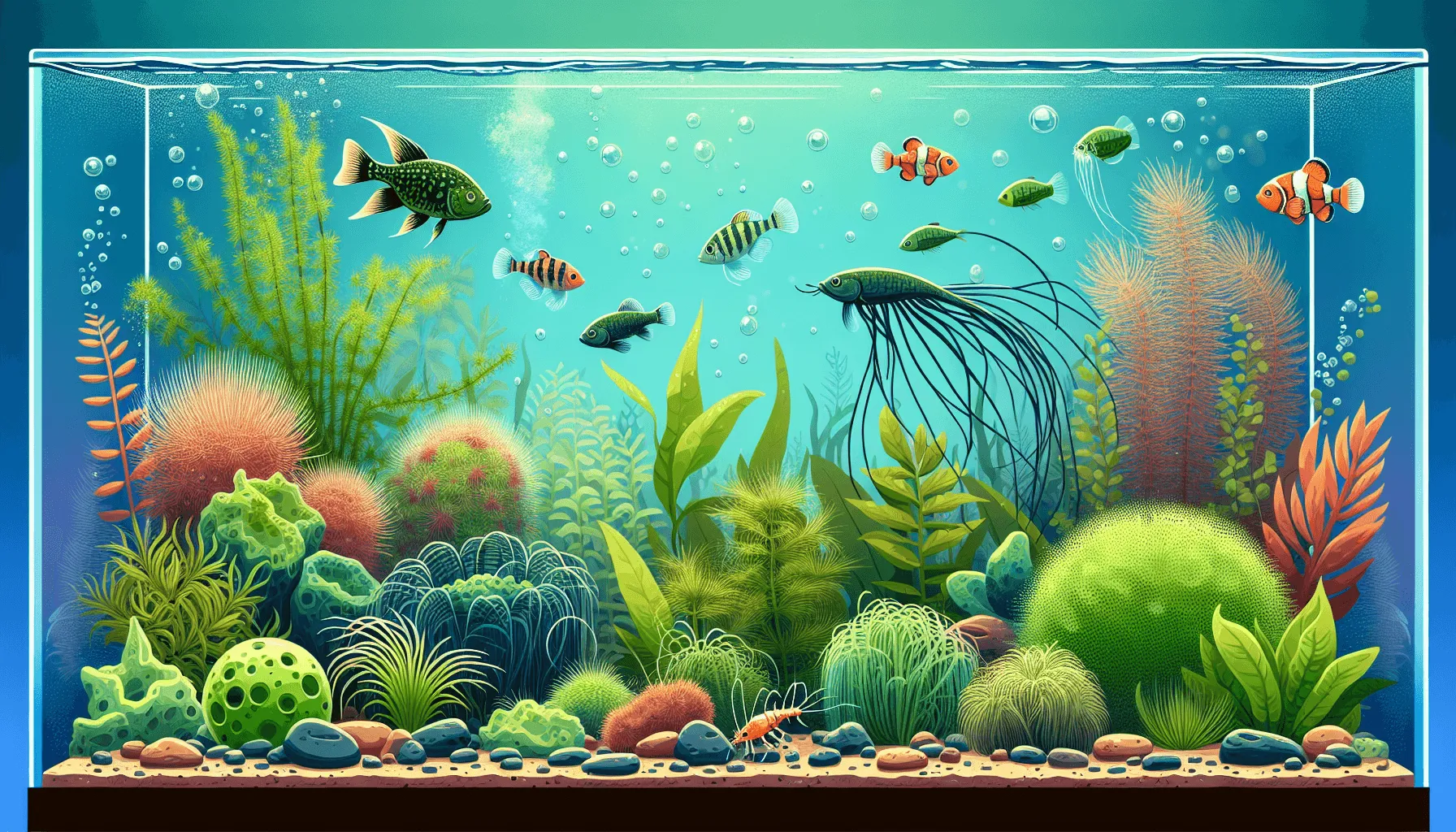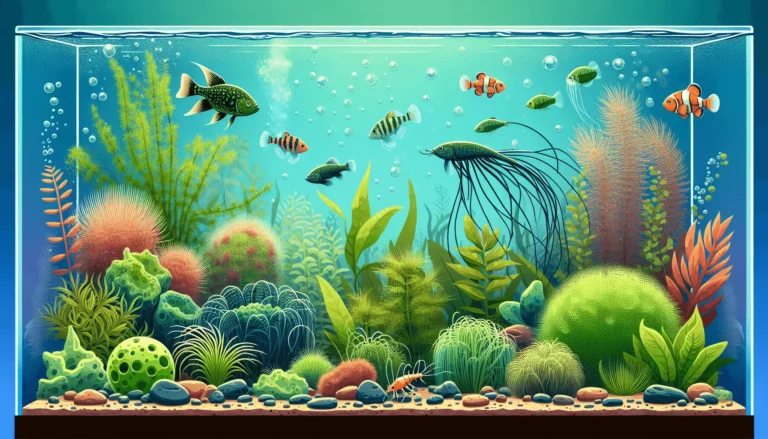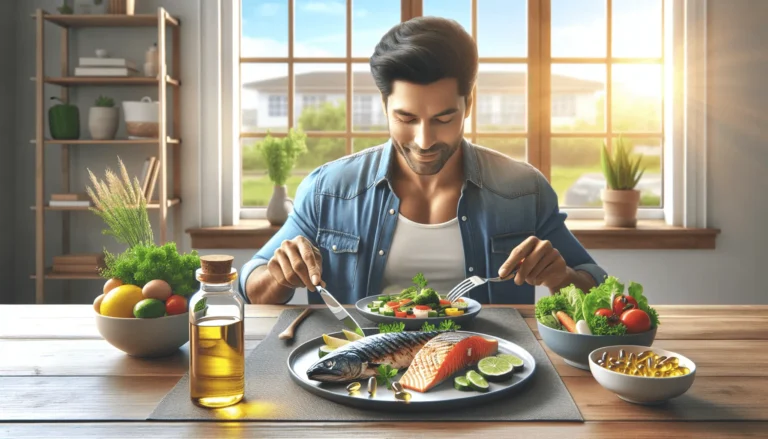Knowing how to cook salmon on the stove means you can make delicious, restaurant-quality salmon at home. This method helps you get perfectly cooked fillets with a crispy outside and tender inside. Plus, cooking on the stove gives you more control over the process compared to other ways.
Why cook salmon on the stove?
- Better flavor from searing
- Easy to adjust heat as needed
- Crispy skin and juicy meat
While using the stove is great, other methods like air frying are popular too. If you’re curious about how long do you air fry salmon, it usually takes about 10-12 minutes at 400°F. This way is convenient and gives a different texture.
Trying out these methods will help you discover your favorite way to cook perfect salmon fillets every time.
Understanding Salmon
Types of Salmon Available for Cooking
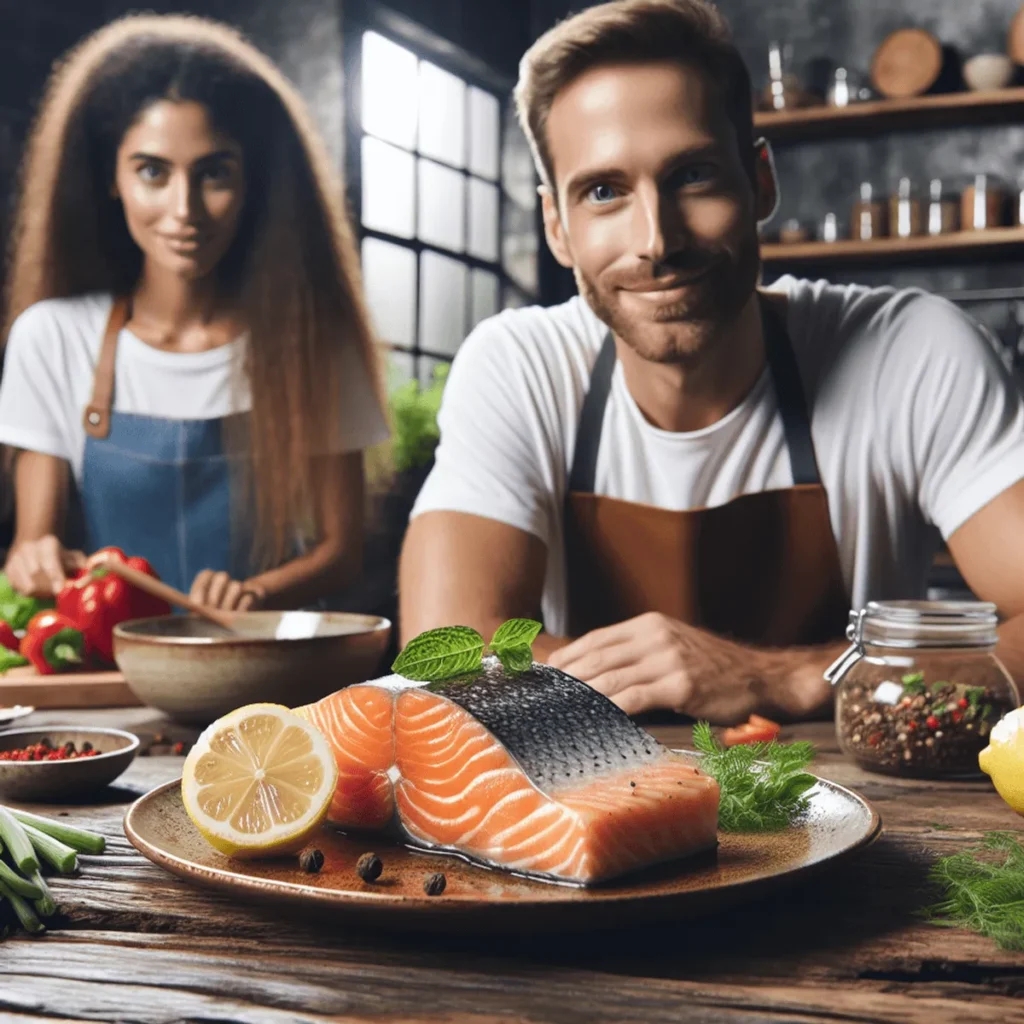
When it comes to cooking salmon, you have several varieties to choose from:
- Atlantic Salmon: Often farmed, known for its mild flavor and tender texture.
- Chinook (King) Salmon: Rich, buttery taste with high-fat content.
- Sockeye (Red) Salmon: Deep red flesh and robust flavor.
- Coho (Silver) Salmon: Milder taste, suitable for various cooking methods.
- Pink Salmon: Light-colored flesh, typically used in canned form.
Nutritional Benefits of Salmon
Salmon is a nutritional powerhouse packed with:
- Omega-3 Fatty Acids: Essential for heart health and reducing inflammation.
- High Protein Content: Provides essential amino acids for muscle repair.
- Vitamins & Minerals: Rich in B vitamins, selenium, and potassium.
Choosing the Right Cut for Your Recipe
Selecting the appropriate cut can significantly impact your dish:
- Fillets: Ideal for pan-searing due to their uniform thickness.
- Steaks: Thicker pieces that are perfect for grilling or baking.
- Whole Fish: Offers a dramatic presentation but requires more preparation skill.
Knowing these details helps you decide which type of salmon and cut will work best for your recipe.
Cooking Techniques for Salmon
Benefits of Searing for Flavor and Texture
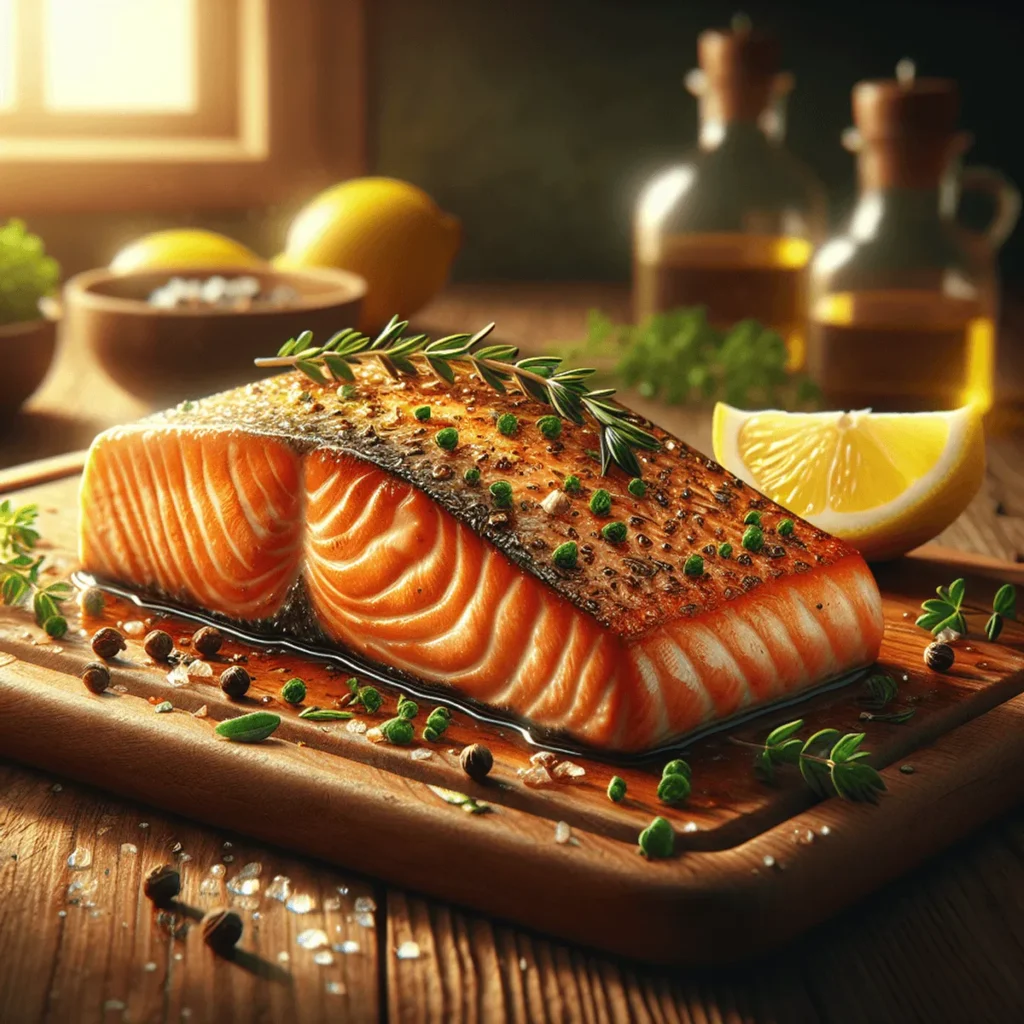
Searing is a popular cooking technique for salmon that locks in moisture while creating a beautifully caramelized crust. The high heat used in searing enhances the natural flavors and gives the fillet a satisfying texture. This method works particularly well if you prefer your salmon to have a crispy exterior with a tender, juicy interior. For more insights into mastering this technique, check out this guide on how to properly sear salmon.
Recommended Equipment
To achieve perfect pan-seared salmon, you need the right tools:
- Nonstick Skillet: Prevents sticking and makes flipping easier.
- Cast Iron Skillet: Retains heat well, ideal for achieving an even sear. It’s worth noting that some foods taste better when cooked in cast iron due to its heat retention properties. Learn more about the benefits of using a cast iron skillet.
Step-by-Step Guide to Searing Salmon
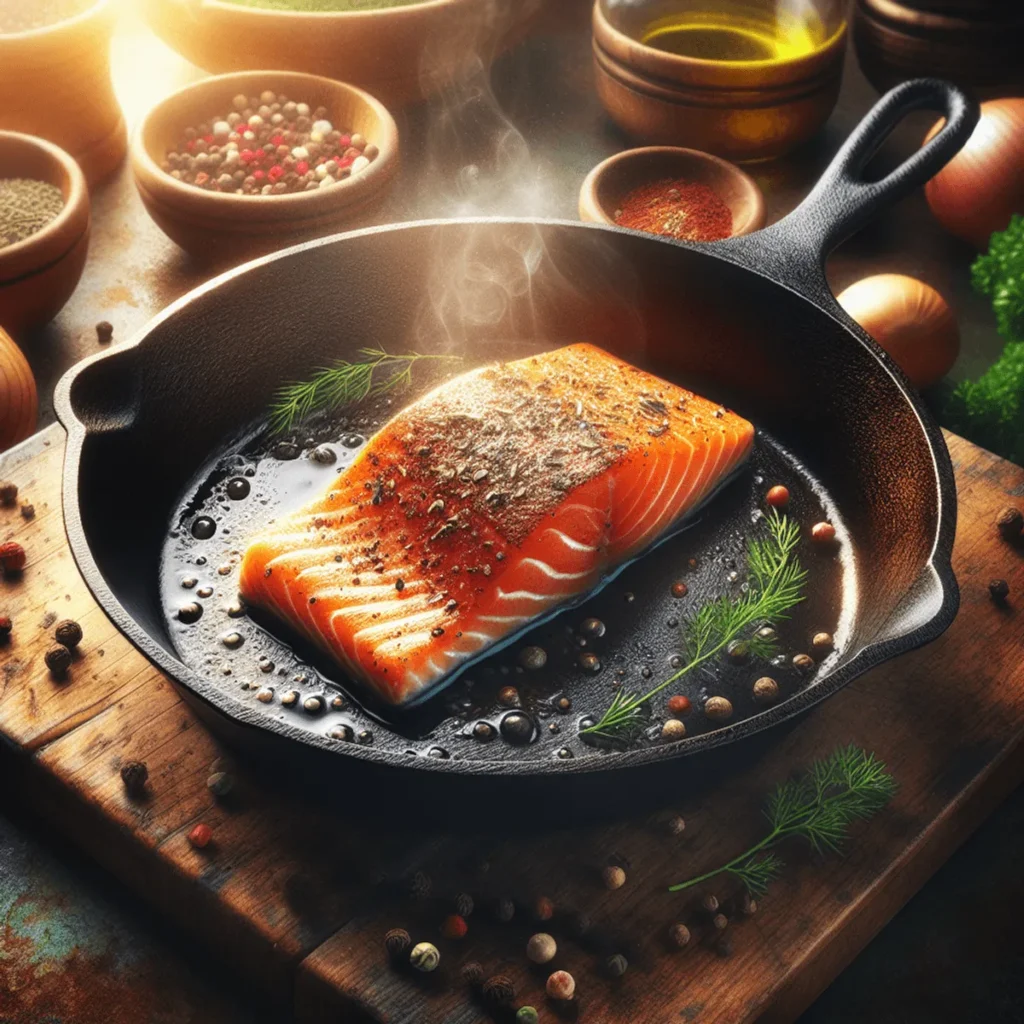
- Season the Fillets: Lightly season both sides of the salmon with salt, pepper, and any other preferred spices or herbs.
- Heat the Skillet: Add a tablespoon of oil (olive oil or avocado oil works well) to your skillet and heat over medium-high until shimmering.
- Place Salmon Skin-Side Down: Carefully place the fillets skin-side down in the skillet. Press gently with a spatula to ensure even contact with the pan.
- Cook Until Golden Brown: Let the salmon cook undisturbed for 4 to 6 minutes, or until it releases easily from the pan and is golden brown on the skin side.
- Flip and Cook Through: Use a fish spatula to flip the fillets. Cook for an additional 2 to 4 minutes or until the flesh reaches an internal temperature of around 130°F for medium doneness.
- Remove from Heat: Take the salmon off the stove and let it rest briefly before serving.
This straightforward approach ensures that your salmon is perfectly cooked every time, making it one of the best ways to cook salmon at home.
Read Also: 5 Easy Steps to Tie a Fishing Hook Like a Pro
How Long to Cook Salmon on the Stove? A Comprehensive Guide
Cooking salmon on the stove typically takes between 7 to 10 minutes. The precise cooking time for salmon fillets depends on factors such as the thickness and type of fillet.
Factors Affecting Cooking Time
- Thickness of Fillet: Thicker fillets will naturally take longer to cook than thinner ones.
- Type of Fillet: Wild-caught salmon often cooks faster than farm-raised due to its lower fat content.
Detailed Cooking Steps
- Prepping the Skillet:
- Heat a heavy-bottomed skillet (nonstick or cast iron) over medium-high heat. Add a tablespoon of oil and let it heat until shimmering.
- Seasoning the Salmon:
- Season the fillets with salt, pepper, and any other preferred spices.
- Cooking Skin Side Down:
- Place the salmon fillets skin side down in the hot skillet using a fish spatula. Cook for about 4 to 6 minutes without moving them. This helps develop a crispy skin while preventing sticking.
- Flipping Technique:
- Once the flesh is cooked three-quarters of the way up, gently flip the fillets using the fish spatula. Cook for an additional 2 to 4 minutes on the other side.
- Checking for Doneness:
- The internal temperature should reach around 130°F for medium doneness. The flesh should be opaque and flake easily with a fork.
Read Also: How to Choose the Best Sputnik Fishing Weight for Surf Fishing
Cooking Time Comparisons
Alternative Methods:
- Air Fryer: Typically, you can cook salmon in an air fryer at 400°F for around 7 to 9 minutes. This method offers a crisp texture similar to pan-searing but requires less oil.
By mastering these steps and understanding these factors, you’ll be able to cook deliciously tender and crispy salmon on your stove every time.
Visual Cues and Resting Period After Cooking Salmon on the Stove
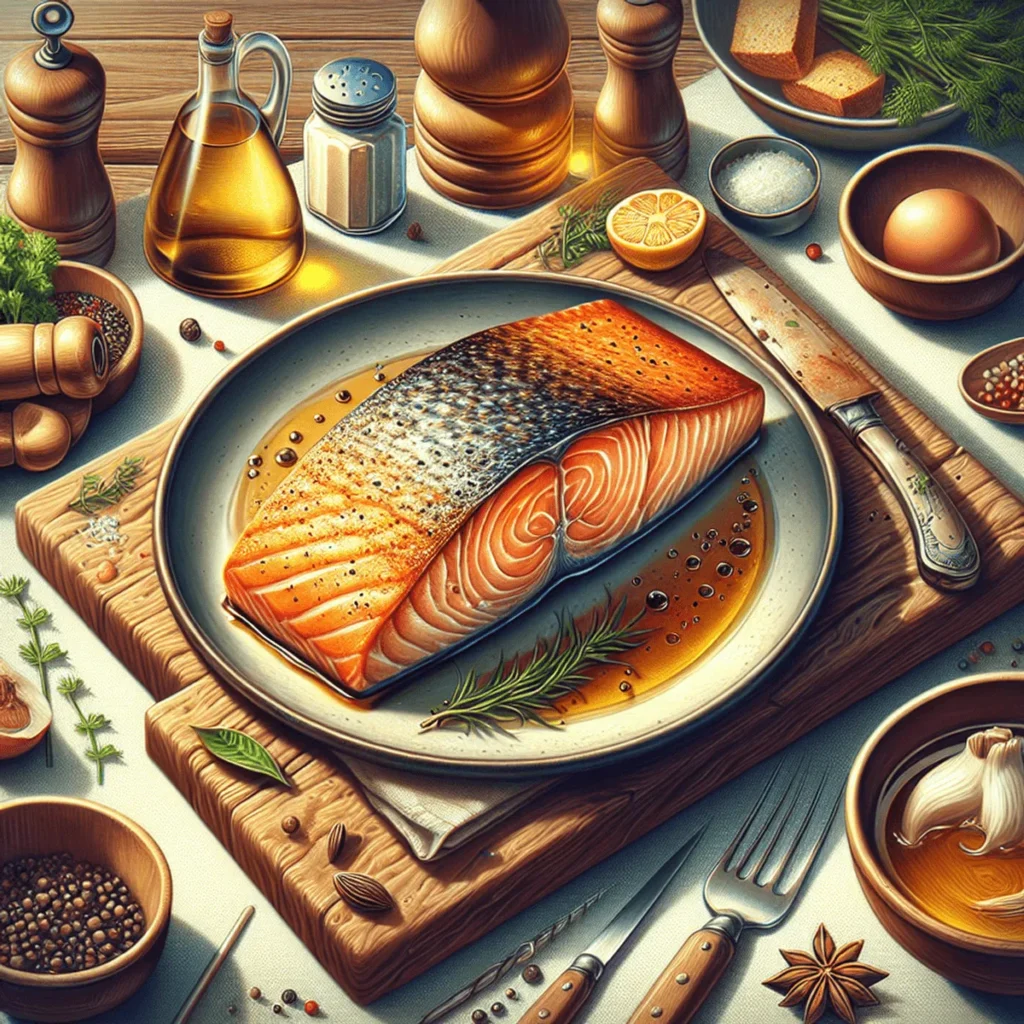
Visual Cues for Doneness in Salmon Fillets
Knowing when your salmon is fully cooked can be determined by looking for specific signs. The best clue is when the flesh looks cooked about three-quarters of the way up the fillet before flipping. At this point, you should see:
- Color Change: The color of the salmon will change from a translucent pink to an opaque white or light pink.
- Texture: The edges of the fillet will begin to lift slightly from the pan, indicating that the skin has crisped up nicely.
- Flakiness: When gently pressed with a finger or a fork, the fish should flake easily without being mushy.
Importance of Resting Period After Cooking
Once your salmon is perfectly seared and cooked through, allowing it to rest is crucial for moisture retention. This resting period helps:
- Redistribute Juices: Letting the salmon rest for a few minutes allows the juices to redistribute throughout the fillet, ensuring each bite is moist and flavorful.
- Maintain Temperature: Resting helps maintain an even internal temperature, preventing overcooking from residual heat.
- Enhance Flavor: The resting period can also enhance flavors as it allows any added seasonings to meld more thoroughly with the fish.
By watching for these signs and giving your salmon a short rest after cooking, you’ll always have a deliciously tender and juicy fillet.
Read Also: Top 15 Best Gifts for Fly Fisherman in 2024
Serving Suggestions and Pairings with Pan-Seared Salmon
When serving pan-seared salmon, garnishing can elevate the dish to a new level. Fresh herbs such as parsley or dill not only add a pop of color but also enhance the flavor profile of the salmon.
Consider these complementary side dishes to create a balanced meal:
- French Green Beans: Lightly sautéed with garlic and olive oil, these green beans provide a crisp texture that contrasts nicely with the tender salmon.
- Roasted Potatoes: Seasoned with rosemary and thyme, roasted potatoes offer a hearty and satisfying complement.
- Quinoa Salad: A refreshing mix of quinoa, cherry tomatoes, cucumbers, and feta cheese can create a nutritious side.
- Asparagus Spears: Grilled or steamed asparagus with a drizzle of balsamic reduction pairs wonderfully with the richness of salmon.
Drizzling fresh lemon juice over the cooked salmon right before serving adds a bright acidity that cuts through the fish’s natural oils. This simple addition enhances the overall taste experience.
For those who wonder how long do you cook salmon in a frying pan, it typically takes 7 to 10 minutes total. The cooking time depends on the thickness of your fillet, ensuring it’s crispy on the outside while maintaining tenderness within.
There are many ways to serve pan-seared salmon, giving you room to be creative in your kitchen. Trying out different herbs and sides can lead to delicious culinary surprises.
Conclusion
Cooking salmon on the stove is an easy salmon recipe using the stove top method that brings out rich flavors and perfect textures. By following these steps, you can master the art of pan-searing salmon:
- Understanding the types of salmon
- Choosing the right cut
- Utilizing proper cooking techniques
- Paying attention to cooking times and visual cues
Experiment with different flavors and combinations to make each meal unique. Whether you’re a seasoned chef or a home cook, trying your hand at this method will elevate your culinary skills.
Ready to give it a try? Grab your skillet and start cooking. Discover how long to cook salmon on the stove, and enjoy a delicious, nutritious meal every time.
Read Also: Why Is Fly Fishing So Expensive? The Truth Revealed
FAQs (Frequently Asked Questions)
How long should I cook salmon on the stove?
The total cooking time for salmon on the stove typically ranges from 7 to 10 minutes, depending on the thickness and type of fillet you are using.
What are the nutritional benefits of salmon?
Salmon is rich in omega-3 fatty acids, which are beneficial for heart health. It also provides high-quality protein, vitamins, and minerals, making it a nutritious choice for meals.
What is the best cooking technique for salmon at home?
Pan-searing is one of the best techniques for cooking salmon at home. It enhances flavor and texture by creating a crispy skin while keeping the flesh moist.
How can I tell when my salmon is cooked through?
You can identify when salmon is cooked through by looking for visual cues; it should appear opaque and flake easily with a fork. A good indicator is when it is three-quarters cooked through.
What are some good side dishes to serve with pan-seared salmon?
Complementary side dishes for pan-seared salmon include French green beans, roasted vegetables, or a fresh salad. You can also garnish with herbs like parsley or dill and drizzle fresh lemon juice before serving.
Can I use an air fryer to cook salmon, and how long does it take?
Yes, you can use an air fryer to cook salmon. The cooking time typically ranges from 8 to 12 minutes, depending on the thickness of the fillet. It’s important to check for doneness visually as well.

